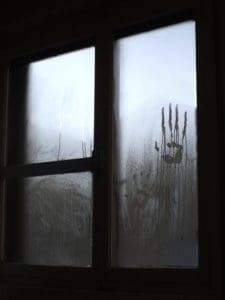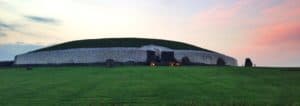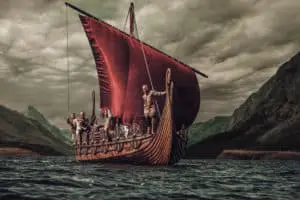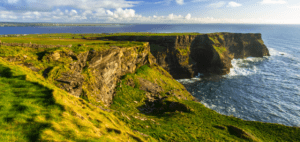The High Kings of Ireland: Myth and History in Celtic Sovereignty
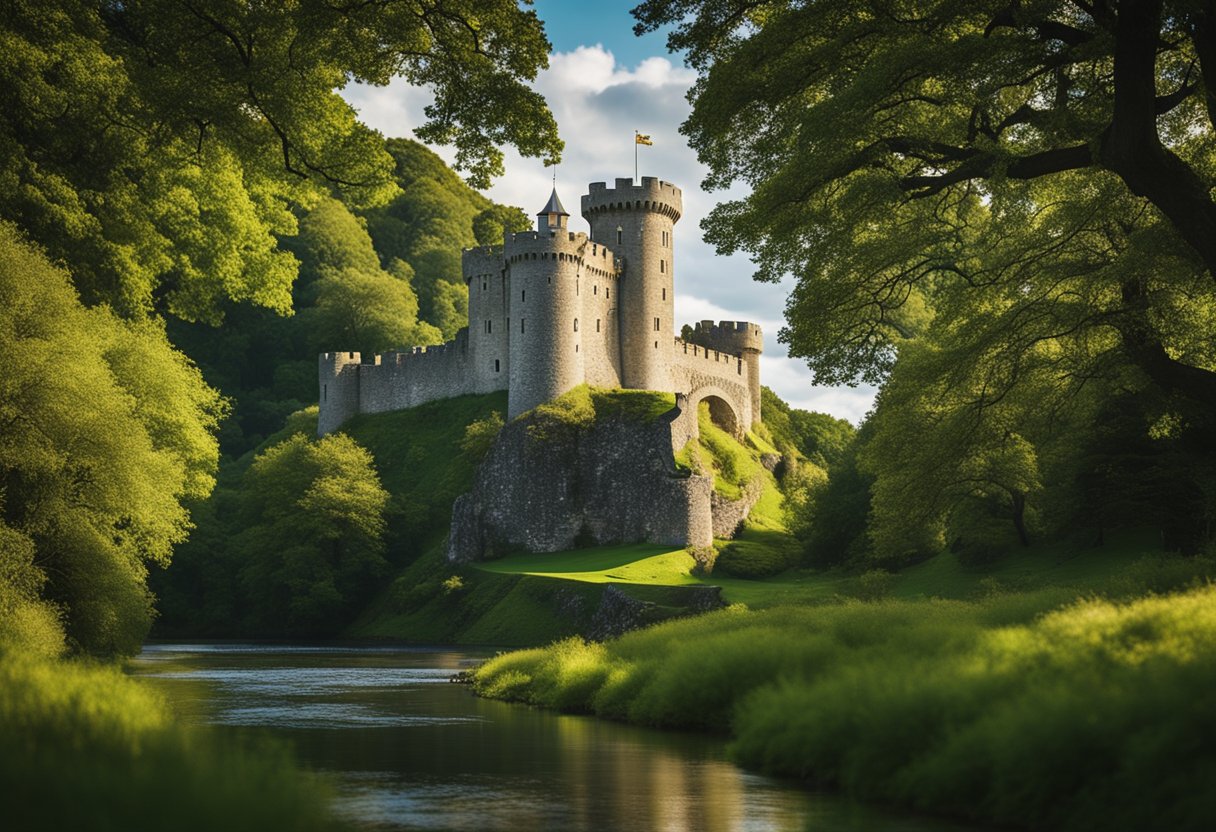
Updated On: April 22, 2024 by Maha Yassin
The High Kings of Ireland occupy a unique place at the crossroads of mythology and history, where tales of legendary rulers blend with the recorded deeds of actual monarchs. The concept of a High King, or Ard Rí, was central to the governance and societal structure of ancient Ireland, symbolising the unity and sovereignty of the island. This intertwining of myth and reality contributes to the rich tapestry of Irish heritage, underscoring the cultural significance of the High Kingship throughout the centuries.
As we explore the High Kings of Ireland, we navigate a complex narrative combining oral traditions, ancient annals, and archaeological findings. The earliest accounts include tales of the Milesians, mythic ancestors of the Celts, who are said to have conquered Ireland. Transitioning from these foundations, the narrative progresses to the more documented reigns of historical figures, highlighting politics, power struggles, and cultural influences. Even as the institution of High Kingship faced decline, its legacy endured, transforming into a powerful symbol of Irish identity and sovereignty.
Origins and Mythology
In examining Ireland’s majestic past, we encounter the interweaving of myth and reality, where legendary figures emerge from the mist of time to shape the island’s sovereignty and cultural heritage.
Tuatha Dé Danann and the Mythological Cycle
The Tuatha Dé Danann, a pre-Christian gods pantheon, is central to the Mythological Cycle of Irish mythology. According to legend, they arrived in Ireland with skills in art and science, bringing with them four magical treasures, including the famed Lia Fáil, or Stone of Destiny. Over time, the Tuatha Dé Danann were celebrated in art and song, with figures such as Dagda and Lugh embodying the skills and attributes that the ancient Irish revered.
- Treasures of the Tuatha Dé Danann:
- Lia Fáil (Stone of Destiny)
- Sword of Light
- Spear of Lugh
- Cauldron of Dagda
Their stories told through oral tradition and later documented by medieval scholars, formed the basis of a heritage that would influence Irish identity for centuries.
The Hill of Tara and the Lia Fáil
The Hill of Tara holds a place of paramount importance in Ireland’s mythological and legendary tapestry. As the seat of the High Kings of Ireland, it was the ceremonial and spiritual heart of the nation. Here, the Lia Fáil—a massive standing stone—was believed to roar in the presence of the rightful king, giving it the name Stone of Destiny.
- Primary Features of the Hill of Tara:
- Mound of Hostages: A Neolithic passage tomb.
- Lia Fáil: The coronation stone.
- Forrad: A circular enclosure associated with kingship rituals.
Through centuries of sovereignty and leaders’ cyclical rise and fall, the Hill of Tara and the Lia Fáil have become indelibly linked with the storied landscape of legendary Ireland.
Historical Context and Annals
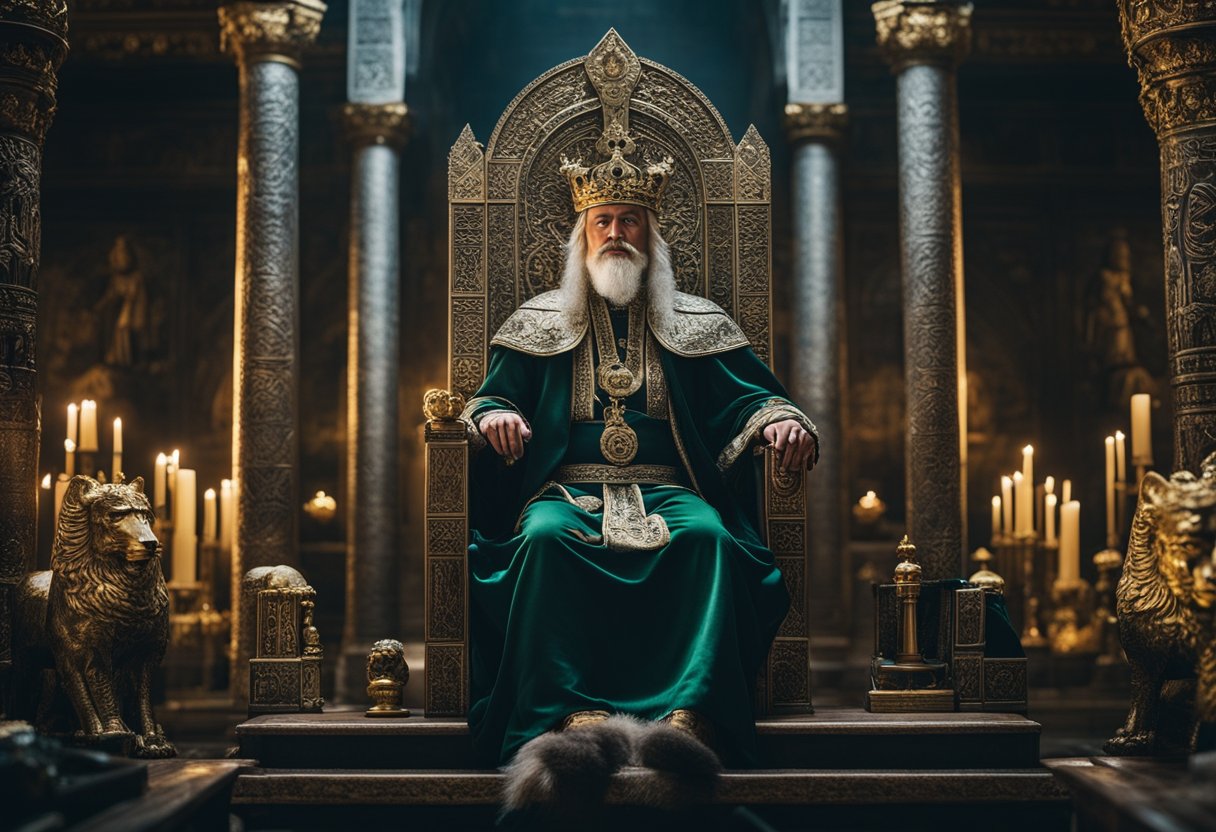
In this section, we’ll explore the foundational texts that chronicle the early rulers of Ireland and the historical compilations that have preserved these tales.
Lebor Gabála Érenn and Early Settlers
The Lebor Gabála Érenn (The Book of Invasions) offers a seminal narrative on Ireland’s genesis, recounting the succession of peoples who settled on the island. It details the arrival of groups such as the Fir Bolg and the Tuatha Dé Danann, culminating with the Milesians, perceived as the Gaelic progenitors. These texts intertwine myth with what may be echoes of actual history to describe the establishment of the High Kingship and the early settlers’ pre-dating written records.
Annals of the Four Masters
The Annals of the Four Masters is a crucial 17th-century compilation of medieval Irish chronicles. It documents events from the legendary first High King to the 12th century and is invaluable for understanding Ireland’s past. The annals include accounts of battles, monarchs, and societal changes, providing a historical frame for Ireland’s rich narrative. This work has been instrumental in tracing the lineage and exploits of the High Kings of Ireland, creating a tangible connection to our storied sovereign heritage.
The Institution of High Kingship
The High Kings of Ireland, or Ard Rí, played a crucial role in forming national identity and the societal structure on the entire island of Ireland. They represented the epitome of leadership and order in Gaelic culture, tasked with the sovereignty of the land.
Rise of the Historical High Kings
The historical High Kings emerged during Ireland’s Iron Age when the concept of a single monarch overseeing the numerous tribal chieftains and local kings began to take hold. This role of the High King, or Ard Rí, became central to Irish national identity as it unified the island’s leadership under a single throne. The High Kingship of Ireland was as much a political institution as it was symbolic, manifesting the Irish people’s identity and order.
Coronation and Regalia
The coronation of a High King was a significant event steeped in ceremony and symbolism. It involved using specific regalia, representing the High King’s authority and duty to the entire island of Ireland. The Lia Fáil—or Stone of Destiny—at the historic site of Tara was central to the coronation process, as it was believed that this stone would roar in approval of the rightful king. Wielding this leadership, the High King commanded respect and was seen embodying the land’s sovereignty over its nations and people.
Prominent High Kings
In exploring the rich tapestry of Irish sovereignty, we encounter several High Kings whose influence and legacies have become the stuff of history and legend.
Niall of the Nine Hostages and the Uí Néill Dynasty
Niall Noigiallach, or Niall of the Nine Hostages, is a towering figure in the annals of the High Kings. His supposed reign in the 4th to 5th century laid the groundwork for the powerful Uí Néill dynasty. The lineage of Niall is claimed to have provided many kings, not only of local kingdoms but also High Kings, for several centuries. The historical accuracy of Niall’s life is debated among historians, but his significance in Irish national mythology is undeniable.
Brian Boru and the Battle of Clontarf
Brian Boru is among the most celebrated High Kings, with his ascent to the throne marking a new chapter in Irish history. His rule culminated in the famous Battle of Clontarf in 1014, where Brian’s forces clashed with a coalition of rebels and Viking invaders. While Brian was killed during this battle, his victory is considered a defining moment for Irish sovereignty. His legacy endured, and although he came from outside the Uí Néill lineage, he remains one of the most renowned historical High Kings.
Politics and Power Struggles
Ongoing tussles marked the political landscape of early Ireland for supremacy, where chieftains, kings, and high kings vied for sovereignty. Leadership was often contested through battles and strategic alliances, with each province having notable dynasties.
Connacht and the O’Connors
Connacht was a region where the O’Connor dynasty rose prominently, especially with figures like Rory O’Connor, who became the King of Connacht. Under his leadership, Connacht strived to maintain a degree of autonomy and power, often engaging in political manoeuvres against other provinces and their rulers. The O’Connors’ influence is also evident in the law tracts of the time, which detail the complex governance systems that involved various grades of chieftain.
Ulster and the Mac Lochlainn Kings
Meanwhile, in Ulster, the MacLochlainn kings were asserting their dominance. Their power struggles centred around maintaining and expanding their sovereignty against encroaching influences. These leadership contests often led to battles that shaped Northern Ireland’s power landscape. The might of Ulster under the MacLochlainns was formidable, setting a high bar for rulership and chieftainship in the region.
Cultural Impact and Sovereignty

The High Kings of Ireland stand at the meeting point of mythology and history, where their influence has shaped both the cultural edifice and notions of sovereignty on the Emerald Isle.
Christianity and Pagan Traditions
The ascension of Christianity in Ireland saw a symbiotic relationship develop with the existing pagan traditions. High Kings, central in pre-Christian society, transitioned from being considered semi-divine to being portrayed as guardians of a Christian nation. This synthesis of beliefs is evident in art and culture, such as the intricate designs of the High Crosses, which blend Christian iconography with Celtic motifs.
Literature and Oral Tradition
The lore of the High Kings of Ireland has been preserved and passed down through a rich oral tradition and, later, in literature. Their tales, enshrined in texts such as the Lebor Gabála Érenn, have inspired countless music, literature, and artworks. This tradition is a cornerstone of Irish history, promoting a collective sense of identity and continuity, evident in the lyrical narratives of Irish folk music and the recurrent themes of justice and sovereignty in storytelling.
Legends and the Historical Record
The threads of legend and historical fact are intricately woven into the tapestry of Ireland’s past. Delving into this rich heritage requires exploring the mystical and tangible traces of the High Kings of Ireland.
Fusion of Myth and History
The Mythological Cycle and the Historical Cycle of Irish tradition contain tales that, although they may possess elements of fiction and legend, serve to underpin the identity of Ireland’s past sovereignty. These accounts, often anachronistic, provide a narrative that blends reality with the supernatural. For instance, the alleged existence of figures like Labraid Loingsech, a legendary High King whose story is enveloped in the magic of myth, compels us to consider how these narratives have shaped our understanding of Irish kingship.
On the other hand, we find historical anchors such as Máel Sechnaill mac Máele Ruanaid, whose reign from 846 to 860 AD is well-documented, marking the shift from the realms of legend to verifiable history. Moments like these convey the transition from the mythological to the historical, albeit retaining a tint of the legendary aura that characterises early Irish history.
Geoffrey Keating and Historical Accounts
Geoffrey Keating, a significant figure in Irish historiography, composed the revered text Foras Feasa ar Éirinn to distinguish the historical from the legendary. Keating’s work meticulously documents the lineage and feats of the High Kings, grounding the mythical in the historical record. His accounts, while authoritative, still reflect the challenge faced when discerning reality from embellished narrative in the Historical Cycle.
His narratives offer a confident and knowledgeable elucidation of Ireland’s past, straddling the line between the fantastical elements of the Mythological Cycle and the verifiable aspects of history. The result is a nuanced depiction of Irish kingship, where the reality of monarchs such as Ruaidhrí Ó Conchobhair is acknowledged alongside the more enigmatic figures shrouded in the mists of time.
Artefacts and Sites of Significance
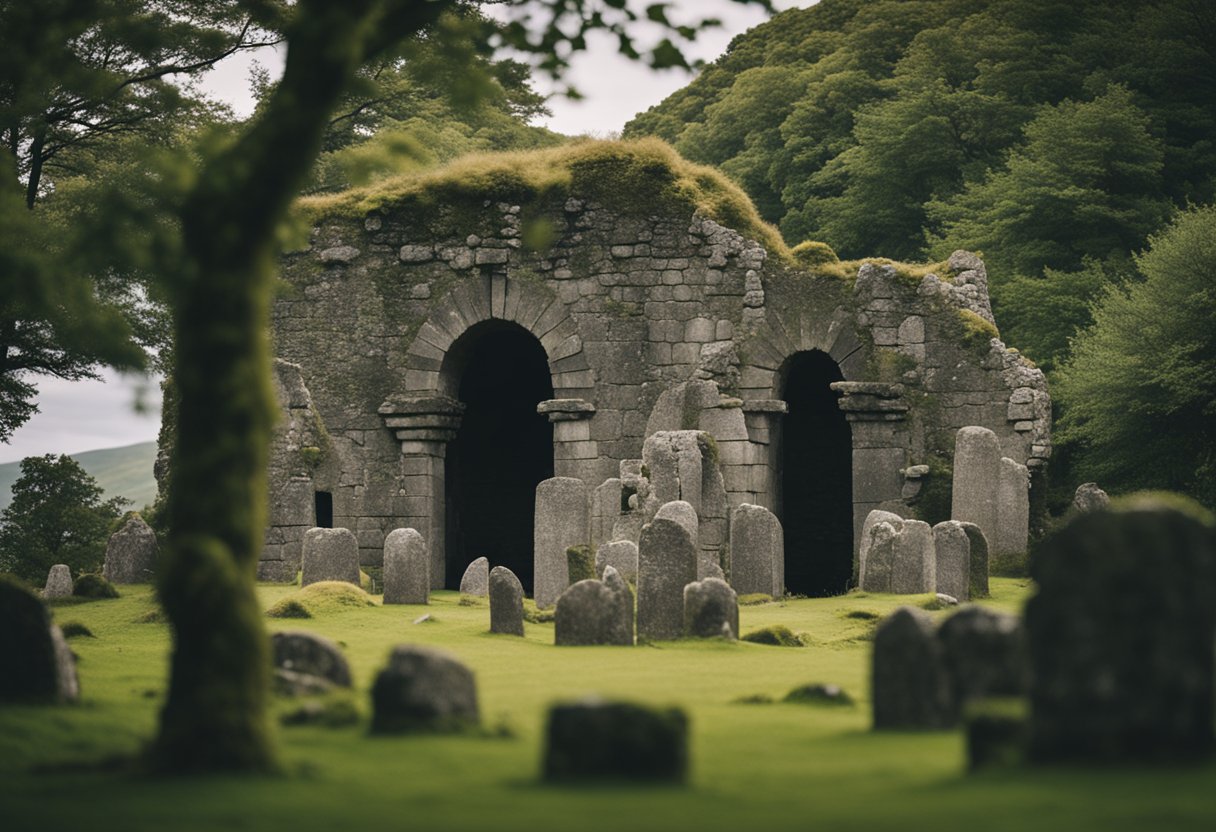
Exploring the High Kings of Ireland, we encounter a wealth of archaeological finds and historical sites, each offering valuable insights into our ancestral lineage and the sovereignty that shaped our nation.
Hill of Slane and the Fire of Sláine
The Hill of Slane is of paramount importance in our heritage. Here, the fire of Sláine mac Dela, an ancient king within the High King of Ireland genealogy, illuminates our history and mythology. According to tradition, it was upon this hill that St. Patrick defied the pagan kings by lighting a Paschal fire, symbolising the moment Ireland was drawn to Christianity. This act of defiance and the hill’s connection to Sláine mac Dela, a forebearer of the Cenél clans of Munster, mark it as a site of profound historical resonance.
Ancient Tombs and Genealogies
Our archaeological endeavours unearth connections to our past, particularly through ancient tombs laden with artefacts revealing kinship with regal lines. Excavations like the Mound of Hostages, a passage tomb at the Hill of Tara, provide tangible links to early High Kings such as Sengann mac Dela. These sites do not merely hold bones; they cradle the very essence of our genealogies, piecing together the lineage of power that flowed through Ireland’s royal bloodlines. The items found within these tombs, from jewellery to weaponry, speak of a time when art and sovereignty were intertwined, each artefact a page in the grand narrative of our heritage.
The Decline and Transformation
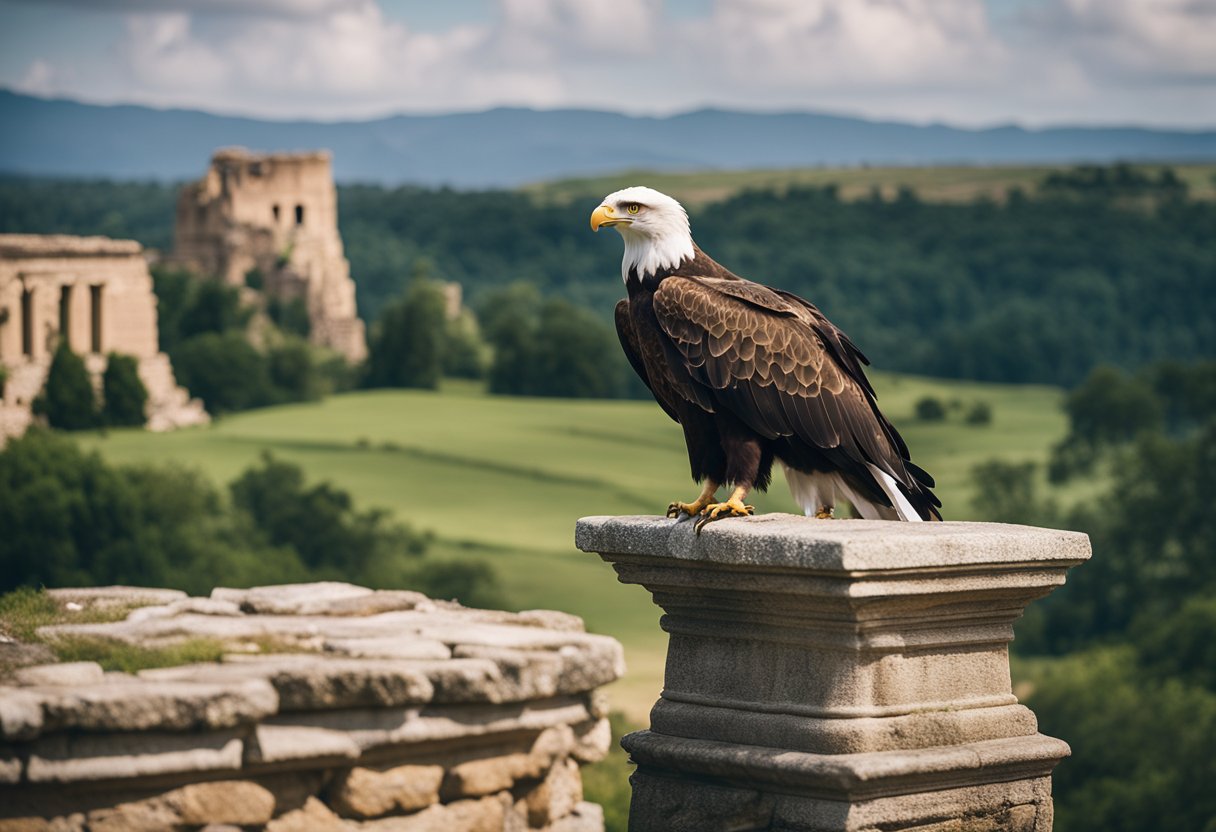
We witness a significant shift in power dynamics and cultural landscape as we examine the fall of the High Kingship and the onset of Anglo-Norman influence in Ireland.
Gaelic Ireland before the Anglo-Norman Invasion
Before the arrival of the Anglo-Normans in the 12th century, Gaelic Ireland comprised a patchwork of territories ruled by various kings and chieftains. Our society was structured around familial clans and septs, each with its traditions and laws, which we call the Brehon Law. The concept of a High King was more ceremonial than administrative, and real power was exercised at a regional level. Ard Rí, or High King, was often contested among the most powerful dynasties, such as the Uí Néill, who traced their lineage to the storied Niall of the Nine Hostages. However, the fabric of our rule was to face unparalleled upheaval with the arrival of foreign forces.
Transition to the Lordship of Ireland
The Anglo-Norman invasion, instigated by the 1169 invitation from Dermot MacMurrough, King of Leinster, led to a palpable shift. The last traditional High King, Ruaidrí Ua Conchobair, could not retain control over the tumultuous changes, and his authority gradually diminished as Anglo-Norman powers, supplied with superior military technology and organisation, seized significant swathes of Irish territory. This period marked our transition from a collection of autonomous Gaelic kingdoms to the Lordship of Ireland under the domain of the English Crown, formalised by the Treaty of Windsor in 1175 and the subsequent Papal Bull ‘Laudabiliter’. Our sovereignty was transformed, with the English administrative system slowly imposing its governance, and the old Gaelic order started to wane, laying the groundwork for centuries of conflict and colonisation.
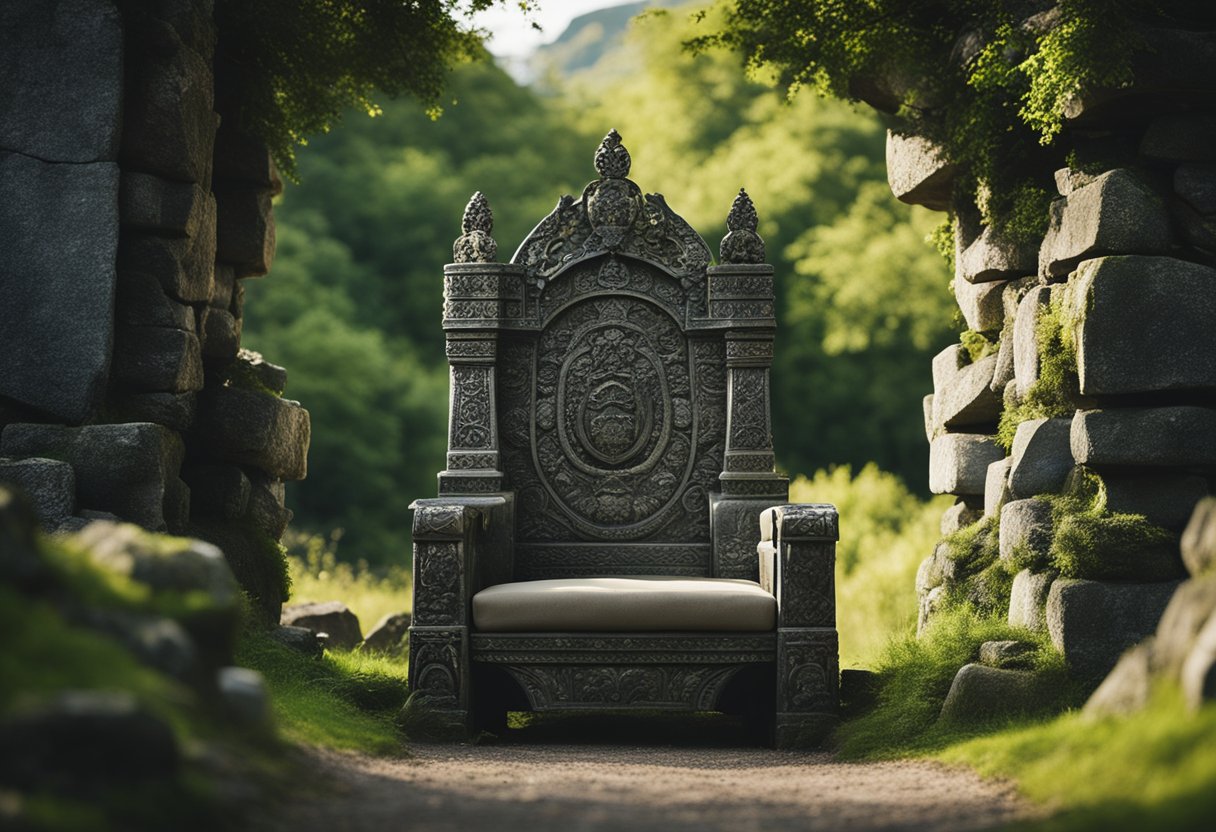
FAQs
This section answers some of the most common queries regarding the legendary High Kings of Ireland, exploring their history, lineage, and roles in shaping Irish sovereignty.
Who were some of the most significant rulers among the High Kings of Ireland?
Amongst the pantheon of Irish High Kings, figures like Brian Boru, who challenged Viking invaders, and Máel Sechnaill mac Máele Ruanaid emerged as pivotal. Brian Boru is celebrated for winning the Battle of Clontarf in 1014.
What became of the institution of the High King in Ireland?
The institution of the High King ebbed following the 12th century, culminating in losing power with Rory O’Connor, the last High King of Ireland, a position eroded by Norman invasions and the subsequent English rule.
Can you list the descendants of the High Kings of Ireland and their historical impact?
Notable descendants include the O’Neills and the O’Briens. Their legacy shaped many aspects of Irish culture and politics, with some families asserting regional control for centuries.
Which individual is considered the most influential mythological king in Irish history?
Divine warrior Lugh Lamfada is revered in mythology, but the mortal King Labraid Loingsech is famed in legend for reclaiming his throne with an impressive army.
How did the High Kings of Ireland assert and maintain their sovereignty?
Sovereignty was maintained through alliances, military strength, and sometimes through the influence of the druids and the ritual of marrying the goddess of the land to symbolise their divine right to rule.
What were the duties and powers associated with the role of the High King in Irish history?
The High King held a sacral role, leading in wars, presiding over the assembly at Tara, and enforcing the Brehon Law. His powers were not absolute, requiring the support of regional kings to reinforce his high kingship.


